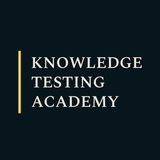MCQ NO 1386 | Biochemistry
Which one is the largest particulate of the cytoplasm?
Which one is the largest particulate of the cytoplasm?
Anonymous Quiz
40%
Entoplasmic reticulum
27%
Golgi apparatus
29%
Mitochondria
4%
Lysosomes
MCQ NO 1387 | Biochemistry
Bulk transport across cell membrane is accomplished by........
Bulk transport across cell membrane is accomplished by........
Anonymous Quiz
13%
Extrusion
17%
Pinocytosis
21%
Phagocytosis
49%
All of these
MCQ NO 1388 | Biochemistry
In mammalian cells rRNA is produced mainly in the?
In mammalian cells rRNA is produced mainly in the?
Anonymous Quiz
15%
Nucleolus
40%
Ribosome
32%
Endoplasmic reticulum
13%
Nucleus
MCQ NO 1389 | Biochemistry
A positive Seliwanoff’s test is obtained with.......
A positive Seliwanoff’s test is obtained with.......
Anonymous Quiz
30%
Glucose
24%
Lactose
34%
Sucrose
12%
Maltose
MCQ NO 1390 | Biochemistry
Phenylalanine is the precursor of.........
Phenylalanine is the precursor of.........
Anonymous Quiz
61%
Tyrosine
9%
Throxine
14%
Histamine
16%
L-DOPA
MCQ NO 1391 | Pharmacology
The term “biotransformation” includes the following:
The term “biotransformation” includes the following:
Anonymous Quiz
5%
Accumulation of substances in a fat tissue
81%
Process of physicochemical and biochemical alteration of a drug in the body
7%
Process of Accumulation of substances in a tissue
7%
Process of Binding the substances with plasma proteins
MCQ NO 1392 | Pharmacology
Which of the following processes proceeds in the second phase of biotransformation?
Which of the following processes proceeds in the second phase of biotransformation?
Anonymous Quiz
10%
Hydrolysis
73%
Acetylation
11%
Oxidation
5%
Reduction
MCQ NO 1393 | Pharmacology
If an agonist can produce submaximal effects and has moderate efficacy it’s called ?
If an agonist can produce submaximal effects and has moderate efficacy it’s called ?
Anonymous Quiz
5%
Antagonist
21%
Agonist-antagonist
13%
Full agonist
61%
Partial agonist
MCQ NO 1394 | Pharmacology
Irreversible interaction of an antagonist with a receptor is due to:
Irreversible interaction of an antagonist with a receptor is due to:
Anonymous Quiz
40%
Covalent bonds
12%
Ionic bond
14%
Hydrogen bonds
34%
All of the above
MCQ NO 1395 | Pharmacology
Tachyphylaxis is:
Tachyphylaxis is:
Anonymous Quiz
50%
A decrease in responsiveness to a drug, taking days or weeks to develop
19%
A drug interaction between two similar types of drugs
29%
Very rapidly developing tolerance
2%
None of the above
MCQ NO 1396 | Pharmacology
The drug competitively blocks chloride channels and prevents movement of sodium, potassium, and chloride into the renal tubular cells is .....
The drug competitively blocks chloride channels and prevents movement of sodium, potassium, and chloride into the renal tubular cells is .....
Anonymous Quiz
19%
Mannitol (Osmitrol)
48%
Furosemide (Lasix)
18%
Triamterene (Dyrenium)
15%
Acetazolamide (Diamox)
MCQ NO 1397 | Pharmacology
Amiloride (Midamone) acts mainly on ........ site of nephron.
Amiloride (Midamone) acts mainly on ........ site of nephron.
Anonymous Quiz
30%
Ascending thick limb of the loop of Henle
31%
Collecting duct
30%
Distal convoluted tubule
9%
Proximal convoluted tubule
MCQ NO 1398 | Pharmacology
The drug is the least potent diuretic is?
The drug is the least potent diuretic is?
Anonymous Quiz
16%
Thiazide diuretics
45%
Osmotic diuretics
17%
Loop diuretics
23%
Potassium-sparing diuretics
MCQ NO 1399 | Pharmacology
Which of the following drug is one of the most potent diuretics?
Which of the following drug is one of the most potent diuretics?
Anonymous Quiz
54%
Furosemide (Lasix)
25%
Hydrochlorothiazide (Hydrodiuril)
10%
Amiloride (Midamor)
10%
Acetazolamide (Diamox)
MCQ NO 1400 | Pharmacology
Which of the following drug can cause ototoxicity:
Which of the following drug can cause ototoxicity:
Anonymous Quiz
17%
Amiloride
35%
Furosemide
32%
Hydrochlorothiazide
15%
Acetazolamide
MCQ NO 1401 | GATE 2003
Simplification of Morphinan system gave one BENZOMORPHAN derivative
Simplification of Morphinan system gave one BENZOMORPHAN derivative
Anonymous Quiz
20%
(a) Pentazocin
29%
(b) Pethidine
27%
(c) Levorphanol
24%
(d) Buprenorphine
MCQ NO 1402 | GATE 2003
A metabolite of SPIRONOLACTONE is
A metabolite of SPIRONOLACTONE is
Anonymous Quiz
29%
(a) Aldosterone
45%
(b) Canrenone
17%
(c) Corticosterone
8%
(d) Pregnenolone
MCQ NO 1403 | GATE 2003
The IUPAC name for NAPROXEN is
The IUPAC name for NAPROXEN is
Anonymous Quiz
17%
(a) (S)-2-(6-ethoxy-2-naphthyl)-acetic acid
39%
(b) (S)-2-(6-methoxy-2-naphthyl)-aceticacid
34%
(c) (S)-2-(6-ethoxy-2-naphthyl)-propionic acid
11%
(d) (S)-2-(6-methoxy-2-naphthyl)-propionic acid
MCQ NO 1404 | GATE 2003
The metabolic function of Riboflavin involves the following
The metabolic function of Riboflavin involves the following
Anonymous Quiz
33%
(a) FMN and FAD
44%
(b) NADP and NADPH
15%
(c) AMP and ATP
8%
(d) Retin and Retinine
MCQ NO 1405 | GATE 2003
X-ray spectral lines Ká doublet arises from transition of electrons from
X-ray spectral lines Ká doublet arises from transition of electrons from
Anonymous Quiz
28%
(a) M shell to K shell
42%
(b) L shell to K shell
23%
(c) L shell to M shell
7%
(d) M shell to K shell
MCQ NO.1406 | IP
What is the ratio of drug and plasticiser in hard gelatine capsule?
What is the ratio of drug and plasticiser in hard gelatine capsule?
Anonymous Quiz
21%
A.1:0.3
18%
B.0.3:1
44%
C.1:0.4
17%
D.0.4:1
